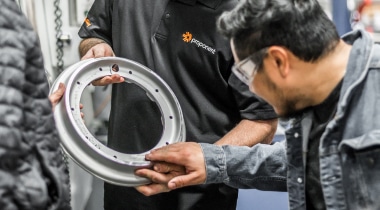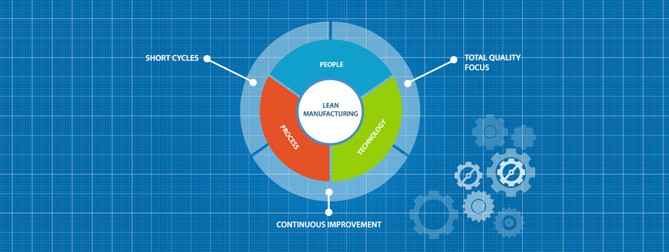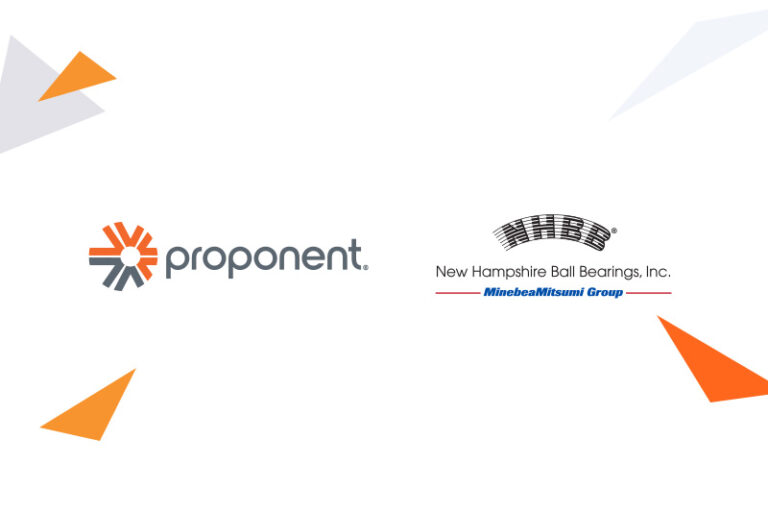In the 1930s, Japanese researchers studying the Toyota manufacturing model developed a new strategy aimed at eliminating inefficiency and excess waste at each stage of the manufacturing process. This model, known as lean manufacturing, relies on continual feedback, process evaluation and “flow,” and it has been a major influence on today’s manufacturing principles. However, the concepts of lean manufacturing go far beyond the assembly line. In fact, large-scale lean efforts have been shown to be effective in the oil and gas, service and construction industries.
Understanding the Lean Process
According to the Lean Enterprise Institute, lean increases value through processes that eliminate or greatly diminish waste. Rather than simply a cost-cutting pursuit, the implementation of lean manufacturing is designed to add maximum value to a product. In other words, the time and expense saved through these principles translate into happier lifetime customers.
Implementing Lean in Manufacturing
The elimination of waste, particularly in terms of time, manpower, overproduction of products and systems interruptions, should be a major concern for any business. According to the Founder and Senior Advisor for the Lean Enterprise Institute, James P. Womack, a few basic (and easily implemented) principles of lean include:
- Listening to customer feedback. Customers can be a business’s best source of product information. They can provide vital feedback on current quality and suggestions for potential improvements.
- Listening to employee feedback. Employees are on the front lines. They should be the first to recognize a policy or procedure that may be slowing down efficiency.
- Promoting manufacturing “flow.” Lean emphasizes the steady flow of products through the entire process—from raw materials to shipping. Research into existing product flow should reveal areas in need of improvement.
- Repeat. Lean processes require regular maintenance of these principles. Steps should be implemented across the board to make detection of disruptions simple and quick.
FedEx Express Aircraft Maintenance: A Lean Success Story
During the recession of 2008, FedEx Express sought ways to reduce costs and maximize productivity. One of these cost-saving tactics was to implement lean principles at the FedEx Express Aircraft Maintenance facility at LAX. Before any changes were made, investigators found that employees spent an average of 1.3–2.4 hours each day walking to retrieve parts and, in total, all employees made 106 trips a day to retrieve expendables and consumables. Those wasted hours and trips meant delays in aircraft repair and service times. Following the implementation of lean manufacturing principles, FedEx Express saw a drastic cut in hours spent on parts retrieval (0.47–1.3hrs), and the average number of trips across all employees dropped to 25! This increased productivity allowed FedEx Express to better weather the storms of the recession.
Lean and Kapco Global
By following the principles of lean manufacturing, Kapco Global is able to meet stringent industry deadlines, supplying airlines with the parts they need to keep their fleets running on time across the world. We regularly seek out customer feedback to improve our processes. One outcome of this feedback was the development of our e-commerce platform, Kapco kart, which features real-time stock levels to make the inventory management process quick, easy and manageable 24/7.
For Kapco Global, the lean manufacturing concepts have translated into less wasted time and a more reliable distribution flow, which directly equates to happy customers.
Read More from the Kapco Global Blog
The Importance of Cultivating Customer Loyalty
Efficiency in Aviation—What the Aerospace Industry Is Doing Right Now to Help Curb Global Warming



















